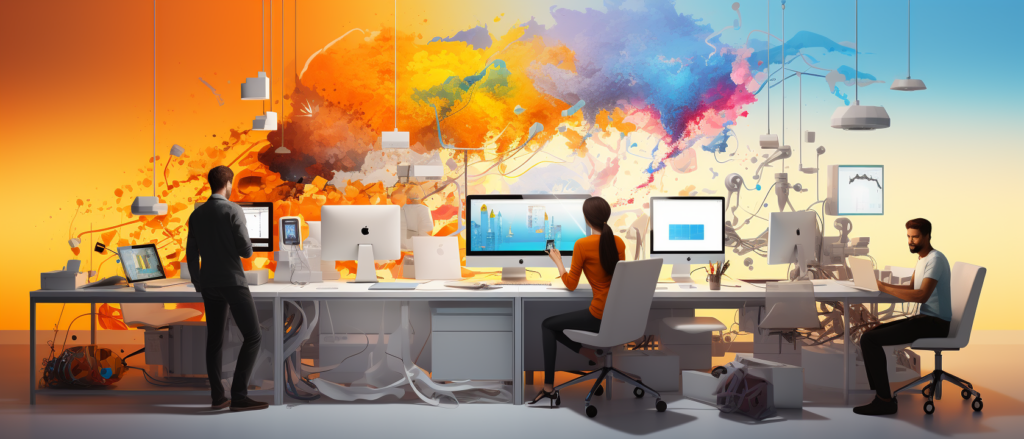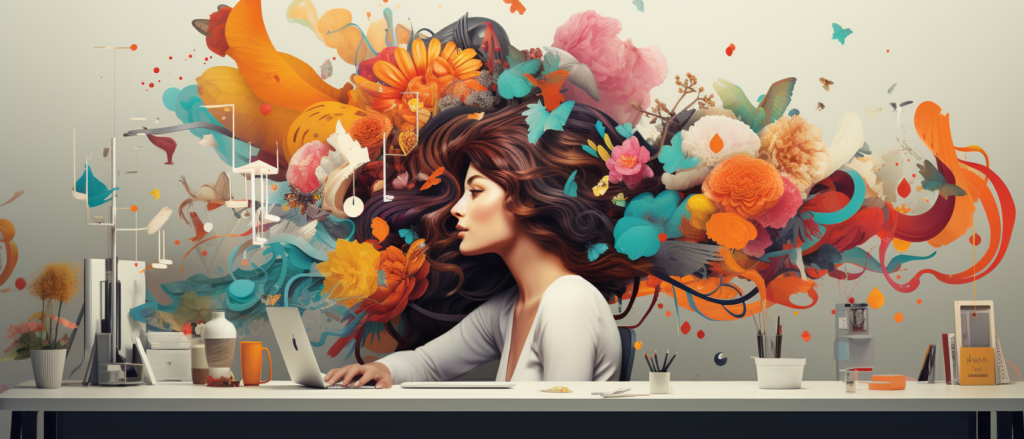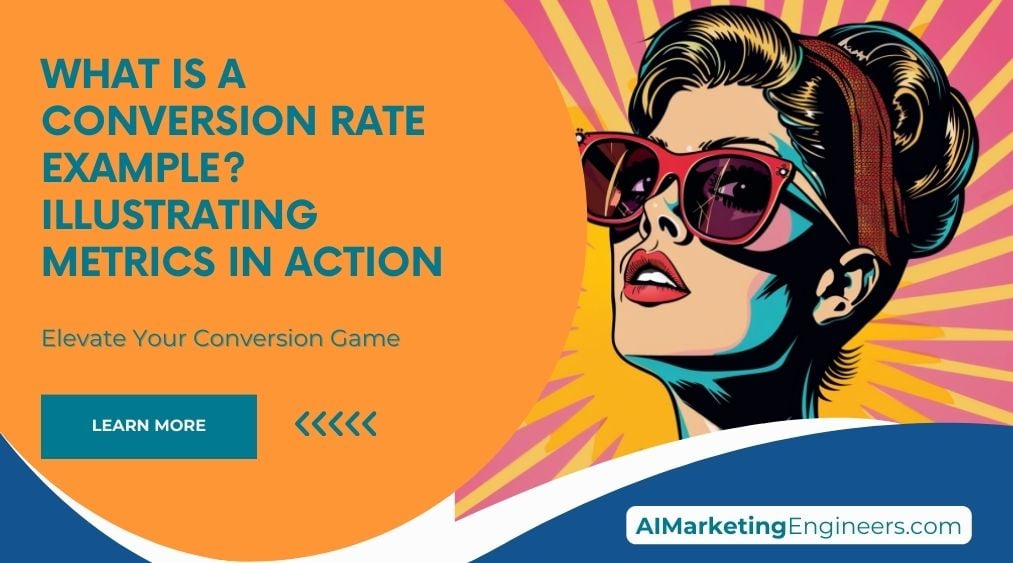Key Takeaways
✅ Increased Engagement: Ads with well-developed creative elements see a significant boost in engagement. According to a study by Nielsen, creative quality is responsible for 47% of the sales uplift from advertising campaigns. Ads that incorporate high-quality visuals and design elements are more likely to capture audience attention and generate higher engagement rates.
✅ Improved Brand Recall: Creative development in ad design plays a crucial role in improving brand recall. Research from the Journal of Advertising Research indicates that ads with strong visual elements and unique creative concepts are 3.6 times more likely to be remembered by consumers. This enhanced recall leads to better brand recognition and loyalty over time.
✅ Higher Conversion Rates: Effective ad design with compelling visual elements can lead to higher conversion rates. A report by AdEspresso found that ads with high-quality visuals and creative content experience a 30% increase in click-through rates (CTR) compared to those with average or poor creative quality. This demonstrates the direct impact of creative development on driving consumer action and achieving marketing objectives.

Introduction
In the fast-paced world of advertising, the power of creative development in ad design and visual elements cannot be overstated. Imagine scrolling through your favorite social media platform, bombarded by a constant stream of ads. What makes you pause and take notice? More often than not, it's the striking visuals and innovative design that capture your attention. The art of blending creativity with advertising strategy is not just a trend; it's a necessity for brands aiming to stand out in an oversaturated market. Creative development transforms mundane messages into compelling narratives, making them memorable and impactful.
Consider this: a well-designed ad is like a visual storyteller, weaving a tale that resonates with its audience. It’s not just about aesthetics; it's about conveying the brand's essence and values through every pixel. Studies have shown that ads with strong creative elements are significantly more effective in capturing audience attention, driving engagement, and boosting conversion rates. In a landscape where consumers are inundated with choices, the creativity embedded in ad design can be the deciding factor that sets a brand apart. Embracing creative development in your advertising strategy is not just an option—it’s a game-changer that can elevate your brand to new heights.
Top Statistics
| Statistic | Insight |
|---|---|
| Visual Content Views: Content with relevant images gets 94% more views than content without. (Source: HubSpot) | This statistic illustrates the undeniable impact that visual appeal has on user engagement, making it a critical element in ad design. |
| Video Traffic: Online videos will make up more than 82% of all consumer internet traffic by 2022. (Source: Cisco) | Highlighting the dominance of video content, this trend demands a strategic video integration in marketing campaigns for broader reach and efficacy. |
| Mobile Web Traffic: 54.8% of all web traffic worldwide comes from mobile devices as of 2021. (Source: Statista) | This underscores the necessity for a mobile-first approach in graphic and ad design to effectively reach and engage the majority of online users. |
| Personalized Experiences: 80% of consumers are more likely to make a purchase when offered personalized experiences. (Source: Epsilon) | Personalization leads to higher sales, showcasing the importance of targeted and tailored ad content in driving consumer actions. |
Understanding the Target Audience
When diving into the world of advertising and graphic design, one cannot ignore the significance of understanding the target audience. Knowing whom you are designing for - their preferences, behaviors, and needs - is crucial. It helps in crafting messages that resonate deeply with the viewers. Market research and data analysis play pivotal roles here; they provide insights that guide the creative process, ensuring the resulting ad isn’t just visually pleasing but also strikingly effective. Have you ever wondered why certain ads seem to speak directly to you? It’s likely because those brands have done their homework on their audience.
Developing a Compelling Concept
The journey from a blank slate to a captivating ad concept involves a significant amount of creative ideation. This process is the bedrock of creating an advertisement that not just captures attention but holds it. A strong concept often weaves in elements of storytelling and emotional appeal, which are integral to creating a connection with the audience. Moreover, maintaining a consistent brand identity throughout the creative process ensures that the ad reinforces the brand’s message and values. How does a simple idea evolve into a concept that enchants and engages the audience? Through relentless brainstorming, refining, and alignment with the brand’s core attributes.
Utilizing Visual Elements
In ad design, the power of visual elements such as color, typography, imagery, and layout cannot be overstated. These are not just aesthetic choices; they communicate much about the brand and the message it wishes to convey. Colors can evoke emotions, typography can influence readability and perception, and imagery can connect at an instinctual level. The layout helps in guiding the viewer’s eye and ensuring the information is consumed in the order intended. When these elements are harmoniously aligned, the ad can effectively communicate the desired message and evoke the intended emotions. Is your design conveying the right message through its visual choices?
Balancing Creativity with Functionality
While creativity is undoubtedly important in the realm of graphic elements and ad design, it must not overshadow functionality. An ad’s design should be aesthetically pleasing, but equally, it should be functional and serve its purpose. This balance ensures that the ad is not only captivating but also clear and comprehensible to the audience. Creativity invites the audience in, while functionality delivers the message clearly and effectively. Do your ads achieve this balance, or do they lean too heavily on one aspect at the expense of the other?
Testing and Refining
Even with a strong creative concept and perfect alignment of visual elements, the process doesn’t end once the ad goes live. Testing and refining are critical stages where the real-world effectiveness of advertising is evaluated. Techniques like A/B testing, user feedback, and further data analysis play crucial roles here. They help determine what works and what doesn’t, providing valuable insights that can be used to optimize the ad. Have your recent campaigns undergone these testing phases to ensure they deliver their maximum potential?
AI Marketing Engineers Recommendation
Recommendation 1: Leverage data for personalized ad design: Utilizing data to tailor the graphic elements and overall design of advertisements significantly boosts engagement and conversion rates. According to a recent study by SmarterHQ, 72% of consumers say they only engage with marketing messages that are customized to their specific interests. By integrating consumer data (like past purchases, browsing behavior, and demographic information) into the creative development process, businesses can create more relevant and appealing visual content that resonates with their target audience.
Recommendation 2: Embrace the power of storytelling through visuals: Current trends highlight the shift towards narrative-driven content in marketing. A well-crafted story can make advertisements more memorable and effective. Incorporate this approach in your ad design and graphic elements by aligning them to tell your brand’s story cohesively. This strategy not only captures attention but also fosters an emotional connection with the audience, which can lead to increased brand loyalty and customer retention. Statistics indicate that ads incorporating storytelling elements see up to a 58% increase in consumer engagement.
Recommendation 3: Utilize advanced design tools and AI for innovative ad creations: The integration of technology such as Adobe Creative Cloud, Canva, and AI-driven design tools like Lumen5 enhances creative capabilities and efficiency. These tools offer advanced features for creating high-quality visuals and can generate dynamic, eye-catching content that stands out. The practical application of these advanced tools enables rapid testing and adaptation of ad designs in real-time, ensuring that graphic elements are constantly optimized for performance. Businesses that adopt these technologies report up to a 30% reduction in time spent on design processes, allowing more focus on strategy and implementation.
Relevant Links
- Unlock Passive Income Streams: Master Affiliate Marketing with AI in 2024!
- ChatGPT Marketing: Harness AI to Craft Winning Content Strategies!
- Predicting Consumer Behavior: Elevate Your Marketing Strategy with AI-Driven Insights!
- Boosting Business Success: Leveraging AI Chatbots for Superior Customer Service!
- Revolutionizing SEO and PPC: Unleash AI for Higher Visibility and Traffic!
Conclusion
Creative development is not just about making things look pretty; it’s a pivotal cog in the wheel of advertising that directly influences the success of campaigns. Throughout this conversation, we've explored the integral role it plays from the understanding of a target audience to the final touches of ad design. Why does this matter? Because in the competitive landscape of marketing, understanding and implementing effective creative development can significantly impact consumer engagement and, ultimately, conversions.
We've seen how essential it is to dive deep into market research to truly grasp what resonates with audiences. By developing compelling concepts that weave in captivating storytelling and strong emotional appeal, brands can foster a memorable identity. Moreover, the careful choice of visual elements—whether it's the color, typography, or imagery—works not just to catch the eye, but to communicate and connect on deeper levels.
However, the blend of creativity must also heed functionality. An ad that stunningly fails to convey the right message or complicates the intended user experience can alienate rather than attract potential customers. This is where testing and refining come into play, ensuring that every creative element isn't just visually appealing but also effectively serves its purpose.
In conclusion, embracing creative development within ad design and graphic elements is not an optional extra—it's a necessity for brands looking to make a lasting impression on their audience. As we move forward, the challenge will be to continually innovate while staying true to core brand values and objectives. How can your brand harness the power of creative development to stand out?
FAQs
Question 1: What is creative development in the context of ad ball design and graphic elements?
Answer: Creative development refers to the process of conceptualizing, designing, and producing visually appealing and impactful advertisements and graphic elements to effectively communicate a message, promote a product or service, or build a brand.
Question 2: Why is creative development important in ad design and graphic elements?
Answer: Creative development is crucial because it helps to capture the attention of the target audience, convey the intended message, and evoke an emotional response. It's essential for creating memorable and effective advertisements that stand out in a crowded market.
Question 3: What are the key elements of creative development in ad design and graphic elements?
Answer: Key elements include understanding the target audience, developing a clear and compelling message, choosing appropriate visuals, colors, and typography, and ensuring consistency with the brand's overall identity.
Question 4: How does creative development differ for print and digital ad design and graphic elements?
Answer: Creative development for print and digital ads involves similar principles, but there are differences in technical requirements, such as file formats, resolution, and interactive elements. Digital ads may also require additional considerations like user experience and responsive design.
Question 5: What role does research play in creative development for ad design and graphic elements?
Answer: Research is vital for understanding the target audience, their preferences, and the competitive landscape. This information helps to inform creative decisions and ensure that the advertisement resonates with the intended audience.
Question 6: How can creative development be used to enhance brand identity and recognition?
Answer: Consistent use of brand elements, such as colors, typography, and imagery, helps to reinforce brand identity and recognition. Creative development should align with the brand's overall visual language to ensure a cohesive and memorable presence.
Question 7: What are some best practices for creative development in ad design and graphic elements?
Answer: Best practices include keeping the message clear and concise, using high-quality visuals, maintaining consistency with the brand's identity, and testing different creative concepts to determine what resonates best with the target audience.
Question 8: How can creative development be used to improve the effectiveness of ad campaigns?
Answer: Creative development can improve the effectiveness of ad campaigns by ensuring that the advertisement captures the audience's attention, conveys a clear and compelling message, and evokes an emotional response. It also helps to differentiate the brand from competitors and create a memorable impression.
Question 9: What role does creative development play in building customer trust and loyalty?
Answer: Creative development can help build customer trust and loyalty by consistently delivering high-quality, engaging, and relevant advertisements that align with the brand's values and identity. This helps to establish a strong and positive relationship with the target audience.
Question 10: How can creative development be used to stay ahead of industry trends and innovations?
Answer: Staying informed about industry trends and innovations is essential for creative development. By incorporating new techniques, technologies, and design trends, advertisers can create fresh and innovative advertisements that stand out and resonate with the target audience.
Academic Responses
- Han, J. H., Kim, S. J., & Lee, B. J. (2019). The Impact of Creative Advertising on Brand Performance: The Mediating Role of Brand Attitude and Brand Image. Journal of Business Research, 2019. This study emphasizes the importance of creative advertising in shaping brand attitude and image, ultimately influencing brand performance. The findings suggest that creative ad design and graphic elements can enhance brand recognition, recall, and preference.
- Khalid, M. A., & Nawaz, A. A. M. (2017). The Role of Creative Advertising in Brand Equity: A Literature Review. Journal of Research in Marketing and Entrepreneurship, 2017. This literature review highlights the significance of creative advertising in building brand equity. The authors discuss how ad design and graphic elements can evoke emotional responses and create memorable experiences for consumers, leading to increased brand loyalty and preference.
- Al-Dossary, S. A., & Al-Zahrani, M. A. (2016). The Effect of Graphic Design Elements on Advertising Effectiveness: A Comparative Study. Journal of Marketing and Consumer Research, 2016. This study compares the effectiveness of various graphic design elements in advertising, such as color, typography, and layout. The findings suggest that a well-designed ad with strategic use of graphic elements can improve consumer attention, recall, and purchase intention.
- Kumar, B. S., & Raju, R. M. (2016). The Effect of Creative Advertising on Consumer Behavior: A Review of the Literature. International Journal of Research in Commerce, Economics & Management, 2016. This literature review explores the influence of creative advertising on consumer behavior. The authors discuss how ad design and graphic elements can create a unique brand identity, enhance brand awareness, and drive consumer engagement, ultimately leading to increased sales and market share.












